#equids
Text

Drawing Animals. Written and illustrated by Maurice Wilson. Published in 1964.
Internet Archive
1K notes
·
View notes
Text
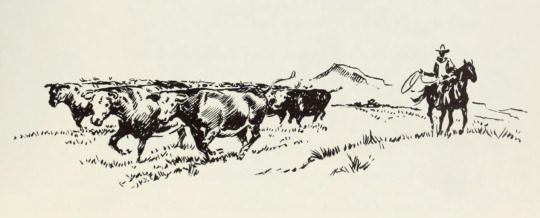
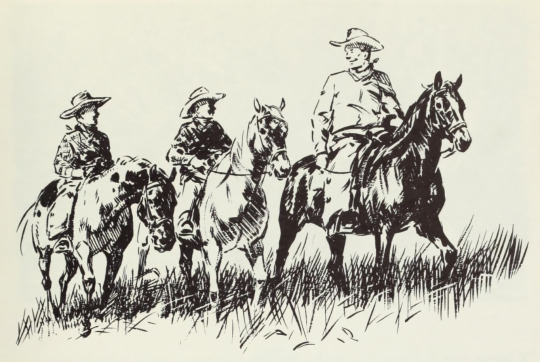




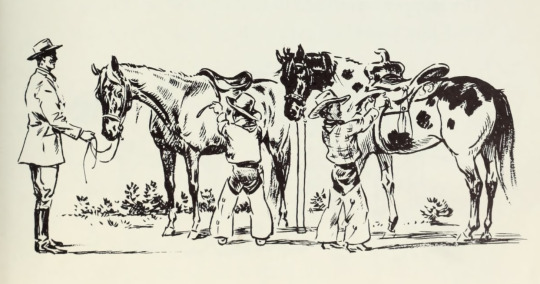
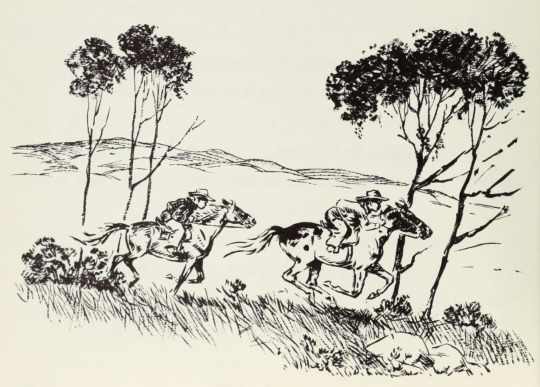
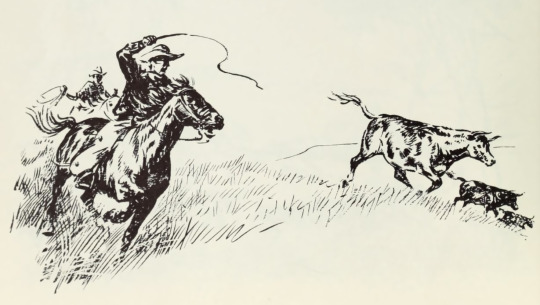
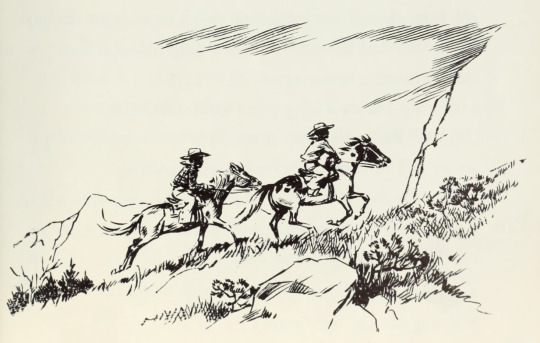


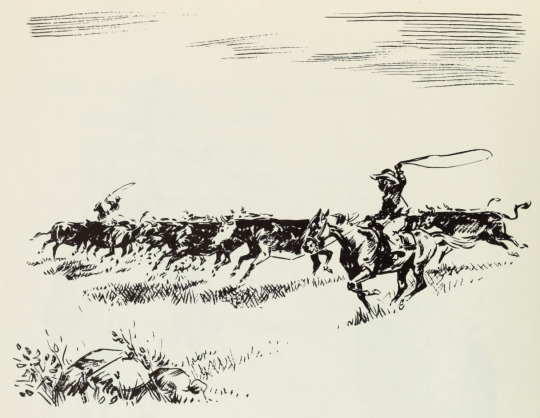
Lance and Cowboy Billy (1950) written by Carolyn Coggins and Jack Holt, illustrated by Wesley Dennis
#lance and cowboy billy#carolyn coggins#jack holt#wesley dennis#yee haw#horses#horse art#horse#illustration#equids#cowboycore#cowboy#cowboys#cows#ranch#wyoming#colorado#nevada#wild horses#wild west#ranch life#ink#1950#1950s#1950s vintage#1950s style#50s#horse illustration#illustrated book#illustrator
1K notes
·
View notes
Text
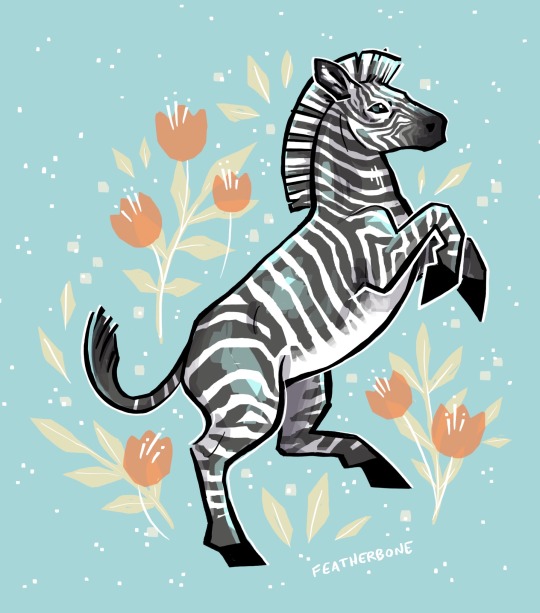
Zebra! Inspired by carousel zebras and heraldry motifs. Zebras’ stripes are unique to each individual. It’s speculated that they’re helpful for camouflage among tall grasses, confusing to predators when they’re grouped in a herd, and may help deter biting insects! They may also help with thermoregulation - a 2019 study discovered that zebras’ black stripes got up to 27 degrees Fahrenheit hotter than their white stripes when the zebras were grazing in the sun. The disparity reportedly causes small convection currents / eddies just above zebras’ skin which help sweat evaporate more quickly and create a cooling effect overall.
[ID: an illustration of a zebra facing to the right, rearing up. It is on a blue background with red flowers and leaves. End.]
619 notes
·
View notes
Text
Happy #InternationalZebraDay! Here are a 1751 George Edwards illustration and a 1763 George Stubbs painting depicting the first zebras seen in Britain: a now extinct Quagga (Equus quagga quagga), and a rare Cape Mountain Zebra (Equus zebra zebra), which also was almost driven to extinction but has thankfully since recovered.

1. The Female Zebra
George Edwards (English, 1694-1773)
hand-colored copper-plate engraving dated 1751
published in Edwards’ Gleanings of Natural History Pt. 1 in 1758 as Plate 223Wellcome Collection
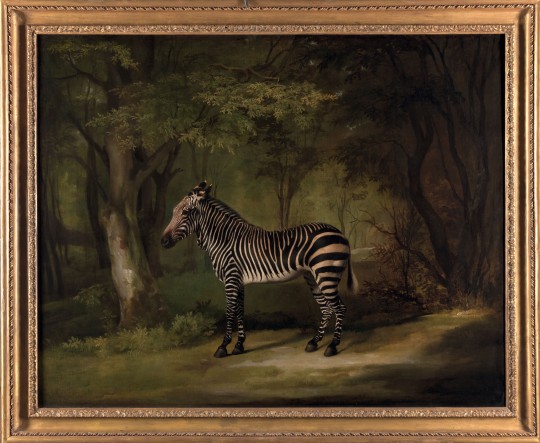
2. Zebra, 1763
George Stubbs (English, 1724–1806)
oil on canvas
Yale Center for British Art
More on the blog: https://arthistoryanimalia.com/2023/01/31/animal-art-of-the-day-for-international-zebra-day-1-george-edwards-george-stubbs-and-the-first-british-zebras/
#zebra#zebras#equids#mammals#European art#illustration#painting#book illustration#engraving#print#works on paper#18th century#British art#International Zebra Day#extinct species#Quagga#animals in art
299 notes
·
View notes
Text

Plains Zebras (Equus quagga) fight for dominance in Kruger National Park, South Africa
by jaffles
#plains zebra#zebras#equids#equus quagga#equus#equidae#perissodactyla#mammalia#chordata#wildlife: south africa#wildlife: africa
61 notes
·
View notes
Text
Dr. Orlando, who has spent years mapping the domestication history of horses, is an author of the paper, which he hopes will jump-start research on the humble donkey and restore some of its dignity. He and researchers from 37 laboratories around the world analyzed the genomes of 207 modern donkeys, living in 31 countries. They also sequenced DNA from the skeletons of 31 early donkeys, some of which date as far back as 4,500 years.
Scholars had previously identified three potential centers of domestication, in the Near East, northeast Africa (including Egypt) and the Arabian Peninsula. But Dr. Orlando’s team concluded that donkeys — humanity’s first land-based transport — were domesticated only once, around 5,000 B.C., when herders in the Horn of Africa and present-day Kenya began to tame wild asses. That date is about 400 years before the earliest archaeological evidence of tamed donkeys from El Omari, near Cairo, and nearly three millenniums before horses were first harnessed.
140 notes
·
View notes
Text

Lin Sun (untitled)
135 notes
·
View notes
Note
If you put a bunch of horses, zebras and donkeys in a large field together, with enough grass, vegetation, water, etc. to consume but without any human intervention - would there be interbreeding going on? If not, what do you think this scenario would look like more generally? Thanks in advance :)
This is a fun question! I know folks have said "absolutely not" to this question before, but I am going to go against the grain and say there would be!
My evidence starts with the Twin Peaks Herd Management Area in California - this is one of the few HMAs that has both horses and burros in the same area and it ALSO has mules pop up from time to time:

In 2010, there was a round-up of 1,800 equids; 180 or so were burros, and almost 20 were mules! You can read more about this HMA here.
I've seen a few of these pop up - including at one of the recent Internet Adoptions, and through a Mustang nonprofit.

So! Horses + donkeys = yes, in the wild! Not often, but it happens. These are a male donkey and a female horse - hinnies, with a female donkey and a male horse, are a lot less common in general, and I don't know of any wild occurrences.
The second part of this is zebroids, or zebra hybrids. Zorses do sometimes happen in captivity, but not often. Zedonks are a more common 'accidental' cross - reported in the Colchester Zoo in England. This was a male zebra and a female donkey:

Zebra-Donkey hybrids have popped up a few times in captivity, including at the Chestatee Wildlife Preserve in Georgia, in 2010. She was similarly born to a female donkey and male zebra. The preserve's founder said that the animals had been running in the same large fields for more than 30 years and never had any crossbreeding until 2010!
Safari Eco Park, in Barbados, has a zedonk that came from a female zebra and male donkey in 2005: "Burchell's Zebra named Allison produced a zonkey called Alex sired by a donkey at Highland plantation in the parish of Saint Thomas, Barbados. Alex, born April 21, 2005, is apparently the first zonkey in Barbados."

I have heard that zonkeys occur in the wild in South Africa between male zebras and female donkeys, but I cannot actually find much proof. There was a wild Zonkey filmed in 1999 along Hennops Offroad Trail outside of Pretoria South Africa, and then another spotting and recording in 2014.
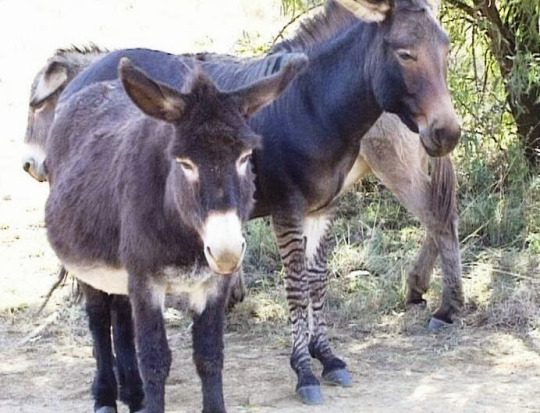
This means that zebra + donkey = yes as well!
Given all this, my answer is that hybrids are a definite possibility in this scenario, if not super likely. They would likely be zedonks and mules rather than zorses though.
13 notes
·
View notes
Text
Join our new equestrian Discord!
Hello horseblr, I don’t know how many of my followers are still active but whatever. Along with a few like-minded friends we have started a new Discord server a while ago. We are a public server so we’d love for more equestrians or horse-lovers to join us!
Realm of the Horse (CLICK) is a fun, light-hearted community equine server where we welcome all, regardless of your discipline & background. We promote ethical standards of practise & believe in fostering an environment where developing your knowledge & understanding of your equines is valuable.
We offer:
★ A safe space to be yourself and make like-minded friends
★ Friendly, responsive and involved staff
★ English and western channels
★ Equine advice and information channels
★ Unique events, movie nights and games
★ Member inclusivity in events and our own up-and-coming magazine!
We talk about a lot of different disciplines, forms of horse-keeping and other topics like breeding. But we also aim to provide a safe community for those of us who seek socialising other than horse topics. We have forums for art, hobbies and crafts, we talk about diverse topics and jut chat about personal or less personal topics. We’re just a group of people wanting to chat and have fun with our friends, and think the more the merrier.
If you’re interested in checking it out, come join us! <3
#horseblr#horses#equestrian#equine#friesians#aqha#thoroughbred#ottb#fjord#irish cob#gypsy cob#horse#equids#vulture culture#photography#art#equine art#equine photography#model horses#horse games#sso#star stable online#red dead redemption#red dead online#equestrian photography#horses of tumblr#dressage#show jumping#hunter jumper#h/j
47 notes
·
View notes
Photo
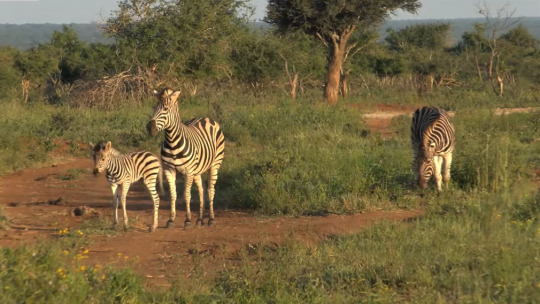
Zebra Family. Madikwe Game Reserve. South Africa.
9 notes
·
View notes
Text

Andernos, L'Huître Direct Producteur
#arcachon#clavain takes photos#this is also a victim of my camera's exposure problems#clavain art#equids
1 note
·
View note
Text

William R. Leigh (1866 – 1955), Navajo Horse (1915), oil on board, 13 × 17 inches.
Coeur d’Alene Art Auction
459 notes
·
View notes
Text
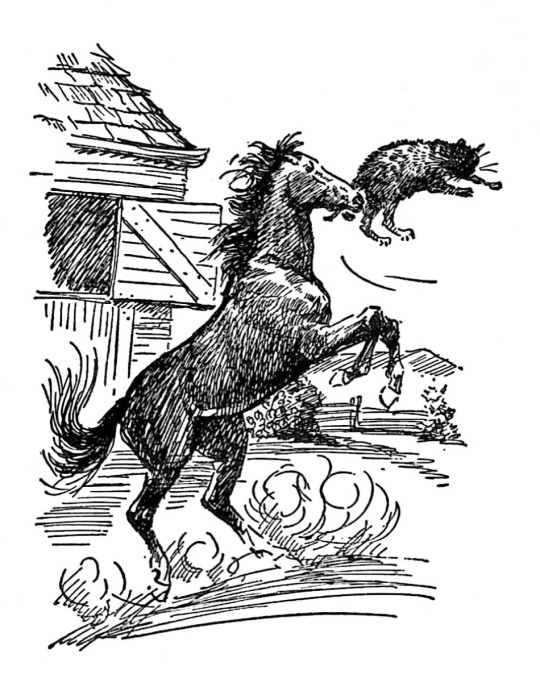


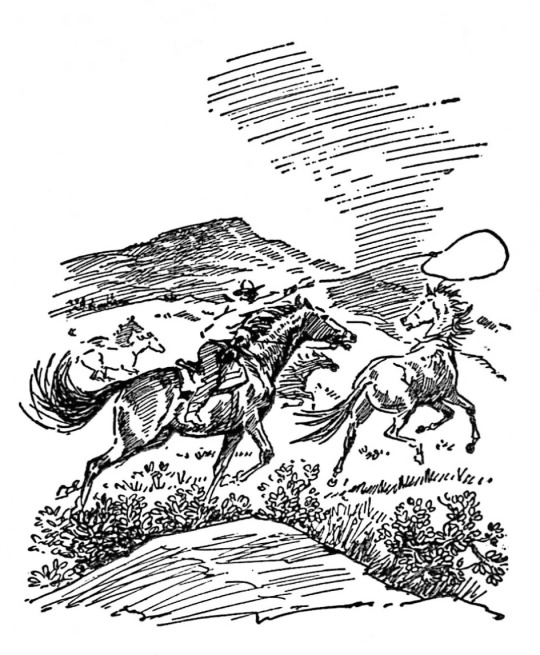
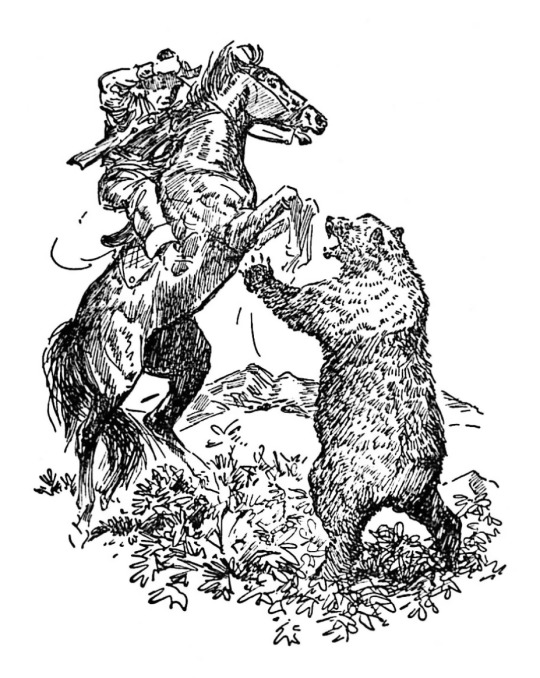
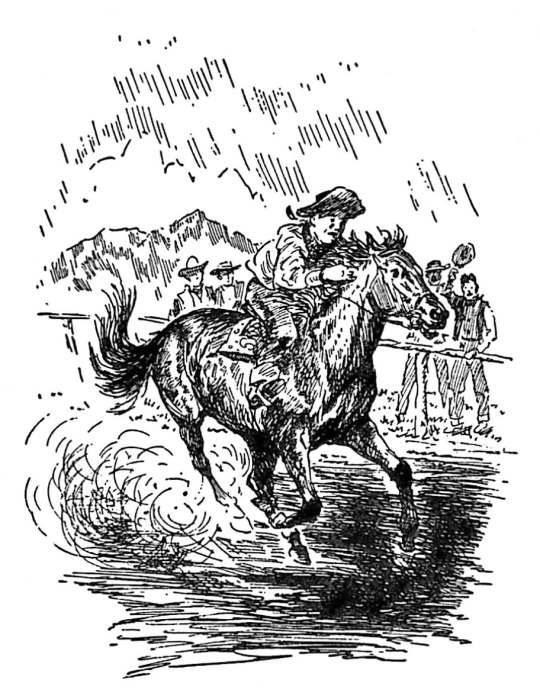
Praire Colt (1947) written by Stephen Holt, Illustrated by Wesley Dennis
#prairie colt#stephen holt#wesley dennis#vintage books#horses#horse art#illustration#equids#horse#vintage#ink#1947#1940s#40s#vintage fiction#cowboys#mustangs#wild horses#wild west#cowboycore#bear#bears#sometimes you have to fight a bear#another book from the internet archive#yee haw#horse illustration#equine art#mr crisp
650 notes
·
View notes
Text
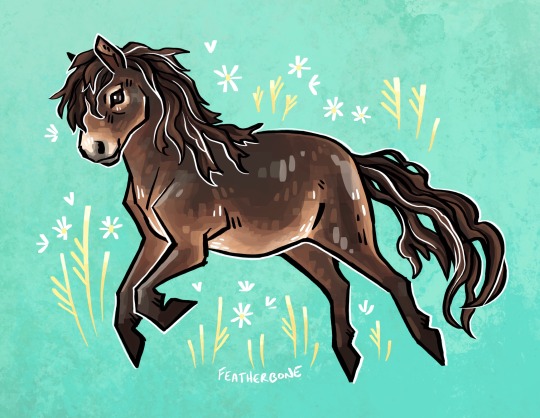
Wild pony :-) this particular breed is a rare variety of semi-feral horse from the Exmoor area in England.
[ID: an illustration of a stocky horse running to the left on a green background with grasses and daisies. It’s coat is dark brown with lighter accents. End.]
453 notes
·
View notes
Photo
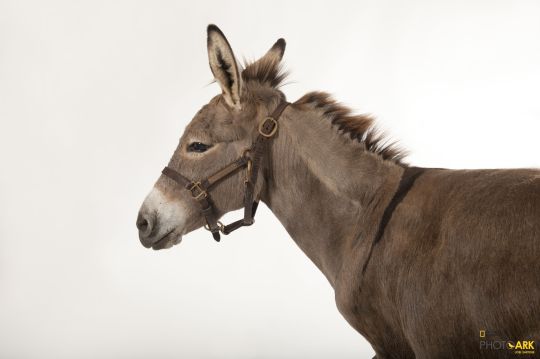
Animals of the Photo Ark - Donkey (Equus asinus)
Family: Horse Family (Equidae)
IUCN Conservation Status: Unassessed (Domesticated)
The Donkey is a domesticated species in the horse family, having first been bred from tamed African Wild Asses (Equus africanus) between 5000 and 6000 years ago, likely in Egypt. Stronger than a similarly sized horse, Donkeys are typically kept as beasts of burden used to pull carts, carry heavy loads and plow fields, although they may also be ridden, used to guard flocks of sheep or goats, farmed for their milk (which was once believed to have medicinal properties), or simply kept as pets. As is typical for an equid, Donkeys are social animals and should always be kept in groups - if left to their own devices they will form small herds consisting of a single male (known as a Jack) and a harem of females (known as Jennies), but larger groups may contain multiple males, and it is also possible to keep Donkeys in single-sex groups so long as dominance disputes are carefully monitored. Donkeys typically live for 20-30 years, but lifespans of 40 or even 50 years are not unheard of.
-----------------------------------------------------------------------------
The photo above is from the National Geographic Photo Ark, and was taken by Joel Sartore. To see more of Sartore’s amazing work and support the Photo Ark, follow the link below:
https://www.nationalgeographic.org/projects/photo-ark/?locale=en
#donkey#animal#equids#donkeys#domestic animals#zoology#biology#mammalogy#animals#ungulates#joel sartore#photo ark#to make this post more fun just imagine that every time the word donkey is used its in the voice of shrek
4 notes
·
View notes
Text

Greg Beecham @gregbeechamstudio
Side by Side, 2020, oil on linen
39 notes
·
View notes